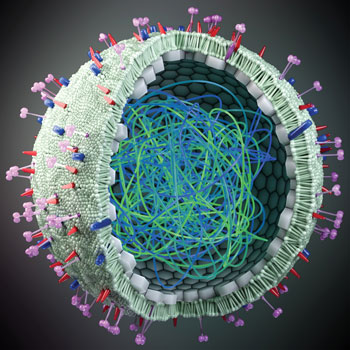Déjà vu all over again for American health care?
The last decade has seen an upsurge in the numbers of “nonphysician providers” or “advanced practice professionals” who are increasingly being placed by health systems to fill gaps in access to care and lower the burden on individual physicians.
Our health care system may be set to experience Yogi Berra's “déjà vu all over again.”
In the late 19th century, there was increasing public mistrust of the medical profession, arising from concerns about a chaotic and often dangerous environment, with poorly trained physicians practicing medicine. Many of these physicians graduated from largely unregulated for-profit medical schools with minimal admission standards, inconsistent and nonstandardized curricula, and limited faculty. Many of the schools prioritized profit over educational quality, looking to fill classrooms and coffers, graduating poorly trained practitioners unprepared for the challenges of medical practice.
In 1908, the AMA's Council on Medical Education partnered with the Carnegie Foundation and commissioned Abraham Flexner to evaluate and seek to set standards for medical education. The resulting report, “Medical Education in the United States and Canada,” was published in 1910 and became known as the Flexner Report. It exposed medical schools that had poor or nonexistent admission standards and lacked basic scientific education as a foundation for clinical practice, as well as a plethora of inadequately resourced for-profit medical schools.
Unfortunately, it must be acknowledged that the racist legacy of the Flexner Report severely damaged medical education for Black physicians, and ultimately the health care of the Black community. For example, the report recommended the closure of almost all schools that trained Black physicians, and its “germ theory” for segregation of medical education recommended that Black physicians be relegated to only a “sanitary role.” However, despite these egregious deficiencies, the overall result of Mr. Flexner's work set a rigorous scientific foundation for the modernization of medical education, with a focus on improved patient outcomes, and gave us today's medical education system, which continues to produce some of the best-trained physicians in the world.
The last decade, though, has seen an upsurge in the numbers of “nonphysician providers” or “advanced practice professionals” who are increasingly being placed by health systems to fill gaps in access to care and lower the burden on individual physicians. The majority of these are now nurse practitioners (NPs), a type of advanced practice registered nurse (APRN), whose numbers have been rising most rapidly.
ACP recognizes that nonphysician team members can play a valuable role in augmenting health care delivery. The College supports a team-based approach where physicians lead collaborative teams to provide comprehensive care. While collaborating professionals can improve the quality, safety, and efficacy of patient care, they can only do this if they, in turn, are well-trained and skilled in their field and work within the scope of their professional specialty and level of training.
Per ACP's recent position paper, “Principles for the Physician-Led Patient-Centered Medical Home and Other Approaches to Team-Based Care,” published in the January 2024 Annals of Internal Medicine, physicians and nonphysician health care professionals are not interchangeable, as they have substantially different training and competencies. All patients should have access to a personal physician responsible for acting as the team lead of the other health care professionals who also care for that patient.
NPs play a role in meeting the current and growing demand for primary care, especially in underserved areas. However, as the numbers of NPs have increased and more are being deployed with a mandate to practice independently by health systems, walk-in clinics, and EDs, there has been a significant shift from the ideal physician-led, team-based approach to a model where more and more NPs make independent major clinical decisions with little or no physician supervision. Some of this can be attributed to physicians' often overwhelming workload, and the reality is that the U.S. health care system is facing a physician shortage that is projected to grow substantially.
The American Academy of Nurse Practitioners (AANP) and sister organizations have been pushing state legislators to pass legislation allowing independent practice. The AANP's annual APRN legislative update, published in Nurse Practitioner in January 2024, cited an “ever-growing body of evidence demonstrating high-quality, cost-effective care” in its pursuit to remove “statutory and regulatory barriers to patients' full access to APRN care.” To date, almost 30 states have passed some form of independent practice laws, and there continues to be strong advocacy for passage of similar laws in all 50 states.
NP training is relatively brief compared to MD programs, and many programs do not offer any significant hands-on clinical exposure, leaving it to the student to find a clinical preceptor. Unlike MD programs, these experiences are unregulated, unstructured, and highly varied, and many students attend “online-only” clinical preceptorships. An article published in July by Bloomberg highlights the specific problems with America's NP training programs: an unregulated wild Wild West of institutional and for-profit entities with no agreed-upon curriculum, no clinical requirement standards, and little or no oversight or regulation.
The proliferation of low-quality NP training programs combined with a deregulated independent practice environment is a recipe for disaster. While advocates for independent practice cite the “high-quality care” NPs appear to provide, much of this evidence is based on limited studies and the performance of previous cohorts who may have had more rigorous training and direct supervision.
There is a dearth of research on patient outcomes for independently practicing NPs, while evidence is accruing that patients seen by NPs tend to undergo more unnecessary tests and have worse outcomes when an MD is not involved in their care.
ACP's position paper found that efforts to allow nonphysician health care professionals to practice independently may sever the patient-physician relationship, undermine team-based collaboration, increase the risk for poor health outcomes, and drive up health care costs, while team-based care does the opposite.
As NP trainees are deployed into independent practice situations lacking prior clinical exposure, patients may pay the price. NPs may not always clarify to the patient that they are not, indeed, fully trained medical doctors, contrary to the ACP position calling for “all health care professionals, administrators, and health systems to disclose professional credentials in a clear and accurate manner.”
ACP also notes that “patients should be made aware of the differences in qualifications and training of clinical care team members.” In an environment where patients are often confused about the roles of the myriad professionals involved in their care, obfuscation and misrepresentation of roles can be dangerous, as patients may not be able to distinguish between an NP's recommendation and a physician's rigorous, well-thought-out differential diagnosis.
This feels like déjà vu all over again. America is once again seeing a burgeoning number of health care “providers” from largely unregulated for-profit programs with minimal admission standards, inconsistent and nonstandardized curricula, and severely limited clinical training. Many of these programs will likely graduate trainees who are poorly suited to the care of an increasingly elderly and complex population.
Adding to concerns is the somewhat willful ignorance of regulators and legislative agencies, amid a continued push for legislation that would legitimize and allow all of these graduates to practice medicine independently.
It's past time for America to have a frank conversation about the training, certification, and scope of practice of all professionals who participate in patient care. In the Oslerian tradition, the safety and well-being of the individual patient must remain sacrosanct, and we must acknowledge that unregulated practice by clinicians with less training puts patients' safety and well-being at risk.
Much like in the early 1900s, we are at a crossroads. We must formally evaluate these training programs, and further, we need a concerted push to inform legislators and regulators of the need for a thoughtful, patient-centered legislative process that is not exclusively in the interest of trade organizations.
At the very least, as we bring more and more “nonphysician providers” into our health systems, it is our collective responsibility to ensure the quality and academic rigor of their training and ensure that they practice at the highest level of competency within their scope of practice.





